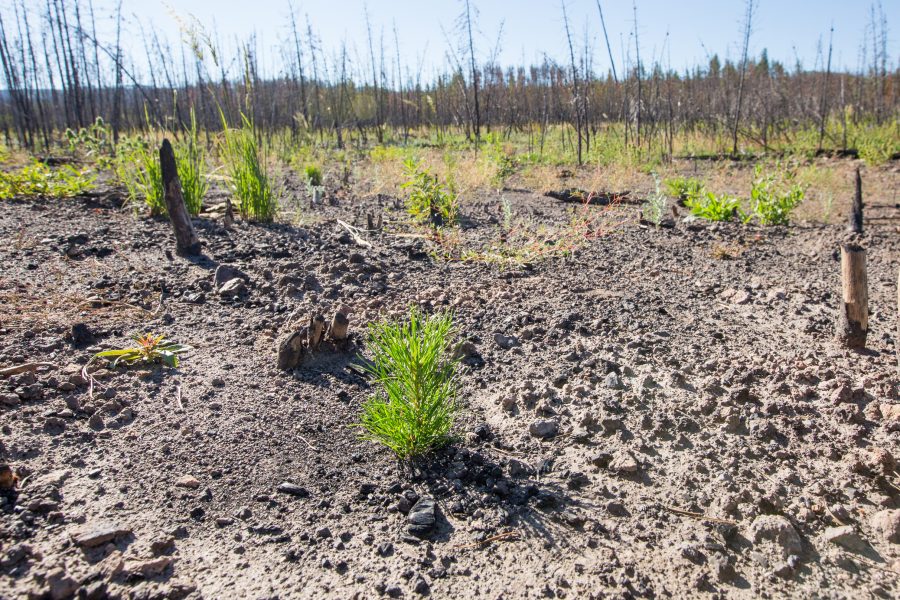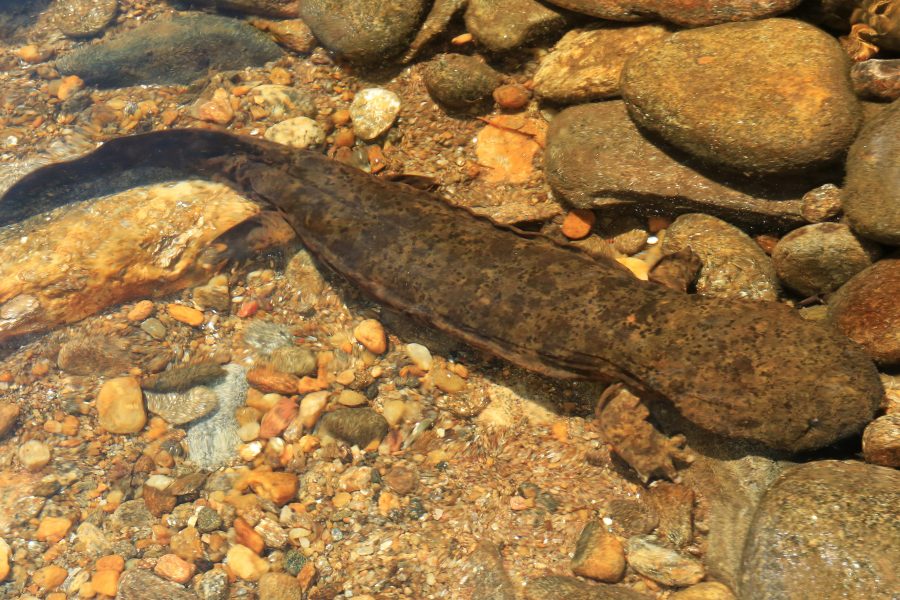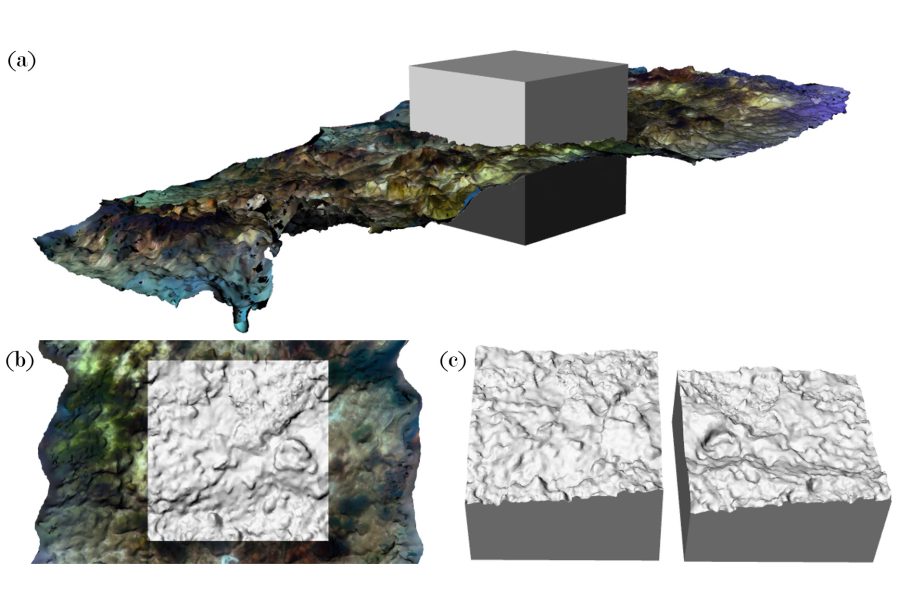March research news from the Ecological Society of America
March 4, 2024
For Immediate Release
Contact: Mayda Nathan, gro.asenull@adyam
The Ecological Society of America (ESA) presents a roundup of six research articles published in March issues across its six esteemed journals. Widely recognized for fostering innovation and advancing ecological knowledge, ESA’s journals consistently feature innovative and impactful studies. The compilation of papers delves into beetle energetics, the interplay between wildfire and climate change, salamander conservation and more, showcasing the Society’s commitment to promoting cutting-edge research that furthers our understanding of the natural world.
From Ecology:
A “pandemic pivot” reveals how dung beetles cope with temperature swings
Author contact: J. Morgan Fleming (ude.ktu.slovnull@71imelfj)
Temperature swings over timescales of days to months force cold-blooded animals to strike a fine balance in allocating precious energy between survival and reproduction. The authors of this article intended to study this tradeoff in laboratory populations of the widespread dung beetle Onthophagus taurus, but the COVID-19 pandemic forced them to quickly adapt their experiments as research facilities were shuttered. Working out of a spare bedroom with rudimentary equipment, the research team relied on the home’s heating and cooling systems to stabilize daily and seasonal temperatures for some of the beetles. Other beetles were monitored outdoors where temperatures were significantly more variable. Records of how much mass the beetles gained or lost, combined with biophysical models that predict energy expenditure, revealed that, surprisingly, O. taurus faces less of a tradeoff between survival and reproduction than previously believed. Rather than pay a high energetic cost in variable conditions, the beetles were able to acclimate and moderate their metabolism when temperatures swung wildly. Furthermore, their reproductive effort showed no signs of falling as O. taurus energy demands rose. Given that climate change is expected to amplify variations in both daily and seasonal temperatures, understanding how cold-blooded animals like O. taurus manage their energetic demands is critical for predicting how they will respond to more extreme environmental conditions.
Read the article: Diurnal temperature variation impacts energetics but not reproductive effort across seasons in a temperate dung beetle

A new Ecology study finds that wildfire promotes upslope range shifts for alpine plants.
Photo credit: Neal Herbert, NPS, Public Domain
Wildfires blaze the trail for range shifts in plants
Author contact: Rachel N. Wilson (ac.cbu.ytisrevidoibnull@nosliwr)
Climate change is driving many plants to seek more amenable conditions by moving to higher elevations, yet little is known about what influence large-scale disturbances, such as wildfire or pest outbreaks, have on changes in distributional patterns. In this article, an international team of researchers resurveyed vegetation plots in Washington’s North Cascades National Park to investigate whether fire events have accelerated plant movement in the 40 years since the original surveys were conducted. Analysis of expansion at range edges and determination of median elevation, together with modeling of time, fire and elevation interactions, indicated that most species not exposed to fire since the original 1983 survey exhibited little change in their distribution, whereas the majority of species that had experienced fire were shifted upslope. The results of the study provide additional evidence that disturbances like fire can accelerate climate-related relocation of plants, increasing the complexity of forest management in the face of a warming climate.
Read the article: Fire sparks upslope range shifts of North Cascades plant species
From Ecological Applications:

Recent findings in Ecological Applications show that a combination of threats put eastern hellbenders at risk of local extinction.
Photo credit: Alan Cressler, USGS, Public Domain
Modeling extinction risks for a long-lived giant salamander
Author contact: George C. Brooks (ude.tvnull@bg01aob)
Vertebrates like fishes, reptiles and amphibians, which typically have long life spans and produce large numbers of offspring, exhibit a wide range of life history traits, encounter different threats across life stages, and can persist for long periods of time despite there no longer being a viable population, a condition known as “extinction debt.” Such factors can greatly complicate estimates of the population status and extinction risk of these species. Analysis of a demographic model constructed for the eastern hellbender (Cryptobranchus alleganiensis), a large, fully aquatic salamander endemic to freshwater systems in the eastern US that can live for as long as 30 years, revealed that interactions among three primary anthropogenic impacts— siltation-related habitat loss, high rates of nest failure and overharvesting—increase the likelihood of local extinction, while density-dependent larval survival and recruitment limit population recovery. Identification of potential tipping points beyond which a species can no longer recover is crucial for effective conservation and management, and thus the authors propose that their model will prove useful for evaluating extinction risk and the effects of threat factors not only for hellbenders but for myriad other long-lived and fecund species as well.
Read the article: Concurrent threats and extinction risk in a long-lived, highly fecund vertebrate with parental care
Birds as bellwethers of farmland restoration
Author contact: Angie Haslem (ua.ude.ebortalnull@melsah.a)
Recovery of avian diversity can serve as an effective indicator of the progress of farmland restoration over time, according to a new study. Based on an analysis of bird communities at 255 sites in three habitat types—unrestored farmland, revegetation plantings and remnant patches of native vegetation in agricultural areas—representing a broad range of restoration stages across southeast Australia, the authors found that, over a 12-year period, bird community composition in revegetated sites diverged from that in unrestored farmland and more closely resembled bird communities in natural sites. The results of the study underscore the benefits of revegetating former agricultural areas with native trees and shrubs for promoting avian richness and diversity, improving the beta diversity of farmland systems and restoring bird community composition to reflect assemblages found in natural areas. The authors caution, however, that a century or more may be required before replanted sites fully mirror natural habitats, with significant implications for restoration and conservation in farmland landscapes.
Read the article: Temporal dynamics in the composition of bird communities along a gradient of farm restoration
From Ecosphere:
Reducing bycatch of at-risk species in Palau’s tuna fishery
Author contact: Eric Gilman (ua.ude.satunull@namlige)
Tuna fisheries confer numerous socioeconomic benefits at local, regional and national scales, including revenues, tourism and food security. However, they also produce enormous amounts of bycatch, with potential detrimental impacts on populations of other large pelagic species, including sea turtles, sharks and stingrays. Area-based management tools (ABTMs) have shown great potential for addressing trade-offs between harvest of target species and bycatch of at-risk species. In this study, the authors employed a machine-learning model built on 20 years of data on the longline tuna fishery of the Oceanic island nation of Palau to generate spatial predictions of catch rates for tuna and other large, open-water species. From these findings, catch “hotspots” were then identified for all species, facilitating the development of management strategies for minimizing spatial—and to a lesser extent, temporal—overlap of tuna and bycatch species. The results of this analysis further highlight the utility of ABTM approaches for limiting incidental bycatch of threatened species in blue water fisheries.
Read the article: Evidence from interpretable machine learning to inform spatial management of Palau’s tuna fisheries

A study in Ecosphere uses 3D photogrammetry to map and measure rocky reefs.
Image credit: Wright & Chamberlain, 2024
Reef relief: a novel method for reproducing complex marine habitats
Author contact: Jon Chamberlain (ku.ca.xessenull@bmahcj)
Replication of the physical structure of a habitat using 3D photogrammetry—essentially, building three-dimensional representations of an environment based on measurements derived from photographic images—has the potential to augment or even replace time- and labor-intensive field surveys. However, increasing physical complexity, such as the presence of folds, ledges and gullies, can reduce measurement accuracy. To address this limitation, researchers in the UK have developed a unique combination of multicamera arrays and 3D photogrammetry to improve reconstruction precision of vertical marine habitats. Focusing specifically on two types of rocky reef environments with vertical features—tropical coral reefs in Indonesia and a chalk reef in the UK—the authors demonstrate the effectiveness of the novel approach in determining relief of both reef types despite their convoluted physical structure, and, in contrast to previous studies, that damage to reefs was negatively associated with complexity. Moreover, analysis of Cancer pagurus abundance—a commercially important crab inhabiting chalk reefs in the North Sea—using this technique matched the results of field surveys showing that adults favored elevated and more intricate reef structures. Application of this novel approach to reconstructing relief could augment research in complex marine habitats like rocky reefs and enhance monitoring of human impacts on ecosystems.
Read the article: Investigating human impacts on rocky reefs using measures of complexity and relief from 3D photogrammetry
###
The Ecological Society of America, founded in 1915, is the world’s largest community of professional ecologists and a trusted source of ecological knowledge, committed to advancing the understanding of life on Earth. The 8,000 member Society publishes six journals and a membership bulletin and broadly shares ecological information through policy, media outreach, and education initiatives. The Society’s Annual Meeting attracts 4,000 attendees and features the most recent advances in ecological science. Visit the ESA website at https://www.esa.org.
Follow ESA on social media:
Twitter/X – @esa_org
Instagram – @ecologicalsociety
Facebook – @esa.org